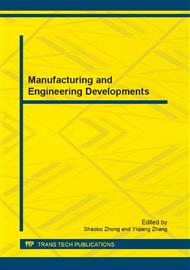p.646
p.650
p.654
p.660
p.665
p.669
p.673
p.678
p.683
Intelligent Shading Control System Based on the Lonworks Bus
Abstract:
In order to improve the lighting and temperature control in large public buildings, intelligent shading technology has been growing attention. This intelligent shading control system is based on the Lonworks bus. It uses various sensors to detect indoor and outdoor light intensity and temperature changes automatically, the system provides reasonable the curtain control program to change the height of the curtains and the blade angle, to regulate indoor lighting and air-conditioning, reducing building energy consumption in all aspects. Common TCP / IP protocol is used to achieve a seamless connection with the building automation system. It concerns with energy saving, low carbon, environmental protection, intelligence concept of modern building.
Info:
Periodical:
Pages:
665-668
Citation:
Online since:
January 2013
Authors:
Keywords:
Price:
Сopyright:
© 2013 Trans Tech Publications Ltd. All Rights Reserved
Share:
Citation:


